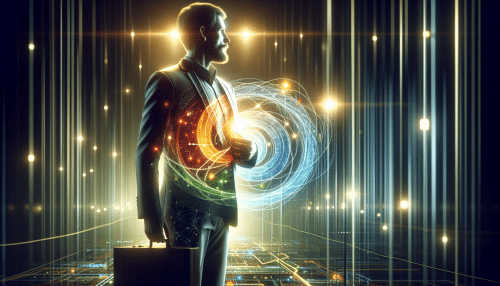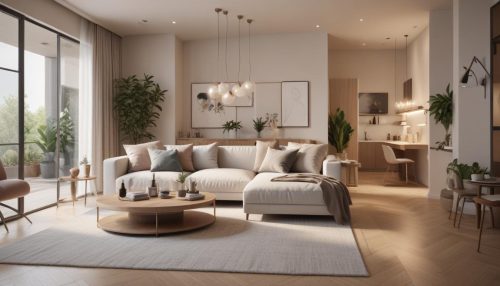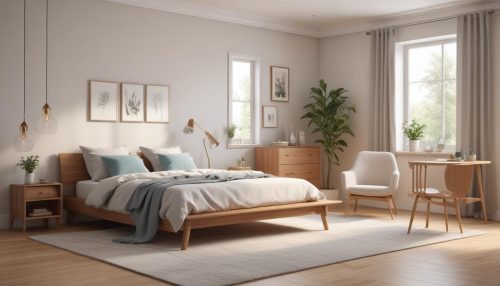Guide to Minimalist Living Trends for You in 2025
Lucas White August 25, 2025
The concept of minimalist living is gaining traction as individuals look for ways to simplify spaces, routines, and even digital lives. Explore how the 2025 wave of minimalism shapes daily experiences, impacts well-being, and offers insights for anyone curious about decluttering and mindful choices.
Understanding Minimalism: More Than Just Aesthetic
Minimalist living trends 2025, is no longer just a visual trend—it’s become a holistic lifestyle choice. In 2025, more people are adopting minimalism to foster calm and clarity amid constant digital noise. This philosophy encourages reducing clutter not only in one’s environment but also in thought patterns and habits. The guiding idea is intentionality: owning fewer possessions while choosing items that add genuine value. This approach sparks both financial mindfulness and personal growth, as less time is spent maintaining objects and more time is spent pursuing meaningful activities. Studies highlight that consciously curated environments can lower stress and enhance productivity, making minimalist design appealing not just for its clean lines but also for its mental health benefits. By choosing quality over quantity, households find joy in what remains, steering attention away from material accumulation and toward experiences instead.
Many individuals exploring minimalist living in 2025 are driven by shifting personal priorities. This isn’t about deprivation. Instead, it’s about making space—both physically and mentally—for the things that matter most. As remote work becomes a staple, clear home environments become essential for focus and well-being. The trend intersects with sustainability movements: fewer purchases mean reduced waste and a lighter environmental footprint, aligning with global goals for conscious consumption. Personal stories often reveal surprising benefits, such as feeling more relaxed, sleeping better, and fostering stronger relationships when the home isn’t overflowing with distractions.
Technology has also influenced how minimalism is practiced. Digital decluttering—managing online files, reducing screen time, and intentionally curating digital feeds—is a growing facet of the lifestyle. By extending minimalist principles to all aspects of life, people report a sense of regained control over time and attention. Some even find that shedding unnecessary obligations, not just objects, leads to increased satisfaction and peace. The rise of minimalist-inspired content in social media and popular blogs reflects a broadening desire to simplify, encouraging new adopters to see minimalism as a flexible, personal journey rather than a one-size-fits-all rulebook.
Organizing Home Spaces: Minimalism for Every Room
Minimalist living trends 2025 doesn’t mean living in bare, sterile rooms. Smart organization and versatile furniture have become central. Living rooms, for example, focus on pieces with clean lines, hidden storage, and multifunctional uses. Instead of filling shelves with decorative items, families choose a handful of personal artifacts to display, infusing spaces with meaning. The kitchen benefits from well-thought-out storage and streamlined appliance choices, reducing clutter while supporting smooth daily routines. Many homeowners now embrace open shelving and neutral palettes, which emphasize spaciousness and tranquility. These design choices go hand-in-hand with sustainable materials and natural light, turning homes into peaceful retreats.
Bedrooms have particularly embraced the minimalist ethos. Limiting furniture to essential items, such as a bed and a simple wardrobe, creates a sanctuary for rest. Personal touches like soft textiles or plants add warmth and personality without overwhelming the space. Bathrooms also prioritize order with floating vanities and clever organizers. These changes have practical benefits: a neat environment makes cleaning faster and less stressful, and less visual noise can contribute to a better night’s sleep. Home organization trends in 2025 focus heavily on the idea that each object should have a purpose—and a place.
In multi-purpose areas (think home offices or shared living spaces), flexibility takes center stage. Fold-away desks, stackable chairs, and modular shelving now dominate minimalist interiors. This flexible approach makes it easier to transition between activities, whether working, socializing, or exercising. Spaces that adapt to users’ changing needs support mental well-being and encourage creative use of what is available. As minimalist decor continues to evolve, more people discover that less truly can mean more—more freedom, more clarity, and more possibilities for personal expression.
Digital Minimalism: Streamlining Your Online Life
Digital clutter is the new frontier for minimalist living. The constant influx of emails, notifications, and social feeds often overwhelms focus. In response, digital minimalism has become a major trend for 2025, with growing awareness of how online habits affect daily mental health. The core principle is simple: limit digital inputs to what’s truly purposeful. Strategies include unsubscribing from promotional emails, regularly organizing files, and disabling non-essential notifications. Emerging apps and browser extensions can help filter distractions and highlight content that aligns with your priorities, making it easier to maintain a considered online presence.
The shift toward digital organization has more to do with well-being than just technology. Decluttering digital spaces frees up cognitive bandwidth, helping users to think clearly and act intentionally. Many are now scheduling dedicated offline periods—sometimes called “digital sabbaths”—to regain focus and reduce stress. Minimalist digital routines, such as keeping the phone off the bedside table or using screen time reports for self-reflection, have gained traction. Educational institutions are incorporating digital literacy and mindful device use into their curricula, acknowledging the long-term benefits of healthy online boundaries.
For workers and creative professionals, digital minimalism can provide a practical edge. By prioritizing essential software and eliminating redundant tasks, productivity improves. File management systems, cloud backups, and intentional folder hierarchies keep work manageable and secure. The trend extends beyond the individual—families and teams are creating shared digital rules, such as tech-free meals or designated device-free zones. The larger impact of digital decluttering in 2025 lies in its promotion of focus, creativity, and a return to meaningful connections—online and offline.
Mindful Consumption: Navigating Products and Purchases
Minimalist living and mindful consumption go hand in hand. Minimalist living trends 2025, consumers are becoming more selective with their purchases, often researching manufacturers, ingredient sources, and product lifespans before buying. The aim is to avoid impulse shopping and choose only items that will be truly used and valued. This shift sparks a move toward local brands, ethically sourced goods, and quality craftsmanship. Social media influencers are spotlighting mindful shopping habits, encouraging others to consider the broader impact of each purchase. Subscription services, once popular, are now scrutinized—many are opting out, realizing that needing less is often more liberating than accumulating more.
Some individuals now track spending through dedicated budgeting apps, making financial minimalism an integral part of the lifestyle. Conscious spending reduces financial stress and contributes to longer-term savings. Green consumerism—a minimalism ally—prioritizes environmentally friendly products, second-hand shopping, and zero-waste tools like reusable bags and containers. TheMinimalist living trends 2025intentional rules: one-in, one-out policies, limited wardrobe capsules, and only replacing items when they break. Such guidelines foster a sense of control over possessions and purchases, which can be especially empowering during uncertain economic times.
Minimalist consumption habits influence businesses too. Brands are responding by offering modular products, upgrades over replacements, and transparent supply chains. Responsible marketing now highlights longevity and repair options, not just seasonal trends. For the consumer, these shifts help balance personal needs with environmental responsibility. Communities and online forums are sharing tips on sustainable living and mindful buying, showcasing the ripple effect of conscious consumption choices. Over time, small acts of restraint accumulate—leading to an uncluttered, purposeful lifestyle that feels both freeing and socially responsible.
Minimalist Routines For Well-being and Focus
Minimalism also influences how people shape their daily routines in 2025. Wellness habits now emphasize simplicity and intention. Mornings may begin with short breathing exercises rather than endless scrolling or multitasking. Evening rituals often include writing in gratitude journals or unplugging from digital devices to support restorative sleep. Meal prepping with a handful of wholesome ingredients saves time and reduces decision fatigue. These routines cultivate mindfulness, helping individuals stay present and focused on each task. Minimalist living trends 2025 fitness is growing, too—bodyweight exercises or walking replace overcomplicated regimens, making health maintenance more accessible to all.
In workplaces, minimalist-inspired time management strategies are gaining traction. Employees are encouraged to streamline meetings, prioritize activities that add value, and consciously limit distractions. This leads to clearer communication, improved collaboration, and less burnout. Some companies even offer “focus hours,” where non-essential activity pauses, giving team members undisturbed time to work on creative or complex projects. New research suggests that workers who maintain minimally structured routines tend to be more productive, satisfied, and innovative.
Minimalist well-being routines also extend to social connections. People are investing more deeply in a few meaningful relationships rather than spreading themselves thin. Thoughtful boundaries—declining unnecessary obligations or saying no to overpacked schedules—are becoming signs of self-respect rather than selfishness. This cultural shift places quality over quantity in human interactions, echoing minimalism’s foundational principle. The long-term effect: more supportive, authentic connections and a greater overall sense of life satisfaction.
Minimalism and Sustainability: Trends To Watch
As the minimalist lifestyle trend evolves, its intersection with sustainability stands out most in 2025. Minimalist choices—whether it’s reducing possessions, sharing resources, or choosing long-lasting goods—help lower carbon footprints and resource use. Community sharing initiatives, such as tool libraries and co-housing groups, reflect the growing interest in collective minimalism. People are sharing stories about leading satisfying lives with fewer belongings, inspiring others to reevaluate old consumption patterns. Minimalism supports the circular economy, where resale, repair, and upcycling gain preference over buying new.
Eco-conscious design now dominates minimalist architecture and interior trends. Solar panels, energy-efficient appliances, and sustainable building materials contribute to more ethical homes. Urban planners and policy makers are also taking cues from the minimalist movement, investing in infrastructure that prioritizes walking, cycling, and green public spaces over car-centric development. Community gardens and urban composting programs are flourishing, evidencing how individual minimalism can ripple out to community-scale positive change.
Minimalism shifts the definition of abundance away from material acquisition to fulfillment through experiences, community, and well-being. Minimalist living trends 2025 and beyond, the trend promises to evolve further—adapting to technology, environment, and society’s changing needs. Those starting on the minimalist journey will find an ever-growing array of resources and support, whether exploring new innovations or drawing inspiration from time-tested wisdom. The minimalist movement continues to remind: sometimes, less is not just more—it’s everything.
References
1. Joshua Becker. (2025). Becoming Minimalist: Minimalism in Modern Life. Retrieved from https://www.becomingminimalist.com/minimalist-living
2. National Sleep Foundation. (2025). Bedroom Design for Better Rest. Retrieved from https://www.sleepfoundation.org/articles/bedroom-design
3. Digital Wellness Institute. (2025). Navigating the Digital World Mindfully. Retrieved from https://www.digitalwellnessinstitute.com/digital-minimalism
4. Ellen MacArthur Foundation. (2025). Circular Economy and Minimalist Living. Retrieved from https://www.ellenmacarthurfoundation.org/topics/circular-economy-introduction/overview
5. American Psychological Association. (2025). Impact of Clutter on Stress and Well-being. Retrieved from https://www.apa.org/topics/stress/clutter
6. Harvard Health Publishing. (2025). Mindfulness and Simplicity in Daily Life. Retrieved from https://www.health.harvard.edu/mind-and-mood/mindfulness-can-improve-your-relationships





